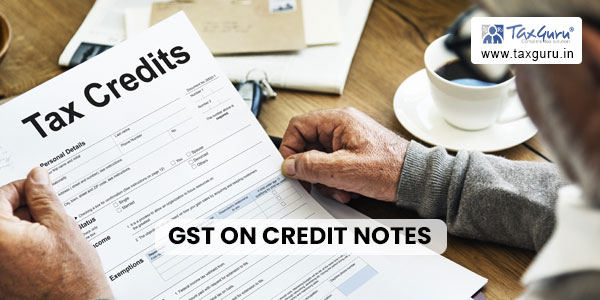Unlock the conditions for charging GST on credit notes as per Section 34 of the CGST Act. Understand the eligibility criteria and time limits for issuing credit notes in the GST framework.
Charging GST on credit note is Conditional
Section 34 of the CGST Act plays a crucial role in regulating credit and debit notes in the context of goods and services. This article aims to provide a comprehensive understanding of this section and its implications. We will analyze the provisions of Section 34(1) and (2), delve into the reasons for issuing credit notes, explore the time limits for issuing such notes, and examine the conditions that must be fulfilled for eligibility. By exploring these aspects, we will gain insights into the conditional nature of GST credit notes and their significance in the GST framework.
Join us as we navigate through the intricacies of Section 34 and shed light on the important considerations surrounding credit notes under the CGST Act.

Section 34: Credit and debit note
Section 34(1) of the CGST Act pertains to credit and debit notes. The extract of the section is provided below:
“Where one or more tax invoices have been issued for supply of any goods or services or both and the taxable value or tax charged in that tax invoice is found to exceed the taxable value or tax payable in respect of such supply, or where the goods supplied are returned by the recipient, or where goods or services or both supplied are found to be deficient, the registered person, who has supplied such goods or services or both, may issue to the recipient one or more credit notes for supplies made in a financial year containing such particulars as may be prescribed.”
Analysis of the provision of Section 34 of CGST Act, 2017:
According to the section 34, a supplier has the option to issue a credit note with GST (referred to as “GST credit note”) on the following grounds:
1. The taxable value or tax charged on the tax invoice is found to be excessive.
2. The goods supplied are returned by the customer (sales return).
3. The goods or services or both supplied are found to be deficient (quality rejection).
The reasons for raising a GST credit note are clearly stated for points 2) and 3) above. However, point 1) is open to cover scenarios such as rate revision or discounts given, among others.
Time limit to issue GST credit note:
Section 34(2) provides the time limit for the supplier to issue a credit note with GST.
The extract of the section is provided below:
“Any registered person who issues a credit note in relation to a supply of goods or services or both shall declare the details of such credit note in the return for the month during which such credit note has been issued but not later than the thirtieth day of November following the end of the financial year in which such supply was made, or the date of furnishing of the relevant annual return, whichever is earlier, and the tax liability shall be adjusted in such manner as may be prescribed.
Provided that no reduction in output tax liability of the supplier shall be permitted, if the incidence of tax and interest of such supply has been passed on to any other person.“
The above provision sets a time limit for the supplier to issue a GST credit note. The GST credit note must be declared in the GST return to be filed no later than the 30th day of November following the end of the financial year. This means that the GST credit note can be included in the return for the month of October following the end of the financial year to which the corresponding original invoice pertains. In short, the timeline to include the GST credit note is the October return of the following year.
In other words, a supplier cannot declare the details of the GST credit note after the October return.
Afterwards, the supplier can issue a financial credit note (credit note without GST) to settle the accounts.
Furthermore, Section 15(3)(b) provides conditions that the supplier must fulfill to issue a GST credit note.
A GST credit note can be issued if a discount is given:
1. Before or at the time of supply by mentioning it on the invoice.
2. After the supply has occurred, provided that:
- The discount is established in terms of an agreement entered into at or before the time of such supply and specifically linked to the original invoice.
- The input tax credit attributable to the discount is reversed by the customer.
While point 1) is clear, point 2) is subjective. Only if the conditions provided are fulfilled by the supplier can a GST credit note be issued.
Conclusion:
Section 34(1) uses the word “may” for issuing a GST credit note. Section 34(2) provides a time limit to report the GST credit note. Section 15(3)(b) imposes conditions to become eligible to raise a GST credit note on discounts.
Therefore, a GST credit note can only be issued if the conditions are satisfied by the supplier. This means that a GST credit note is conditional and not mandatory.
***
The author welcomes your feedback on this article at gganeshan.k@gmail.com.





An order passed by the authority u/s 34 (2) of the GST act ‘is appealable u/s107 of the act?